How does a song keep me coming back 1000 times?
Does analyzing a song to this extent remove some of its magic? Is this tantamount to getting a magician to explain his tricks? I don't think so.
Does analyzing a song to this extent remove some of its magic? Is this tantamount to getting a magician to explain his tricks? I don't think so.
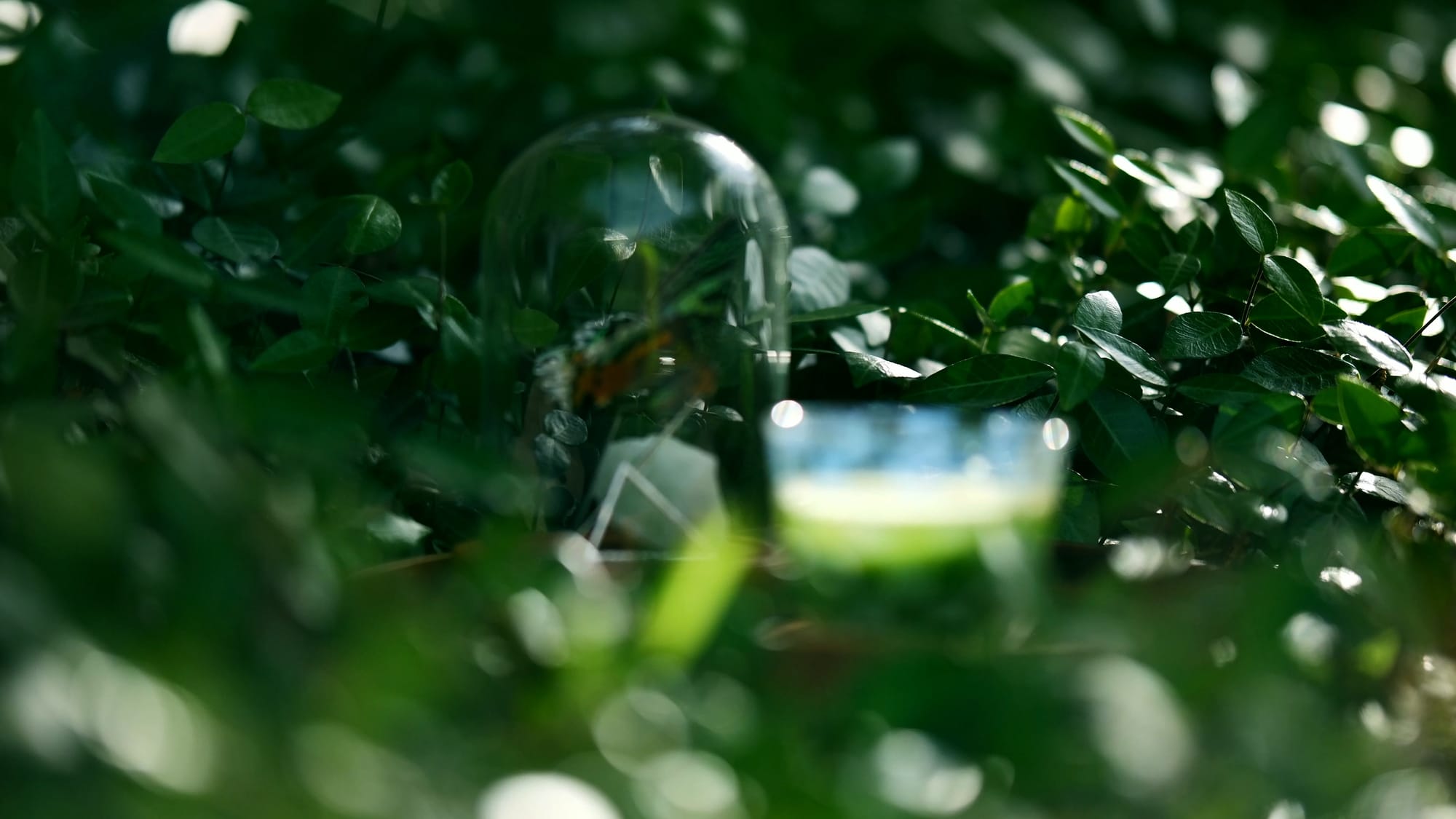
一回、二回、三回、… 、九百回、…😁
Welcome to the launch of my blog. In this series, I’ll share the music I love and explore why I love it, with explanations ranging from music theory to the cultural context. Simultaneously, I'll intersperse my photography work where appropriate.
Today’s focus is on Think of Summer, a Japanese song I’ve been obsessively cycling through my Walkman over the past year with detailed analyses of the introductory chord progressions.

First, some personal listening statistics.
How do I know I’ve listened to this nearly 1000 times?
YouTube Music shows the total number of listens for a song among all listeners. However, the service doesn’t provide personal listens for a song, perhaps because it would be too useful. Unless you’re somewhat determined, that is.
Biast12 graciously open-sourced a script that provides statistics on one’s YouTube and YouTube Music listening/watch history from their Google Takeout information.
Aside, re Google Takeout: It’s surprising (or maybe not) how much information one can gather about their life from here.After downloading the 20GB of my watch history data and running the script with slight modifications (on the graph aesthetics), I get this:
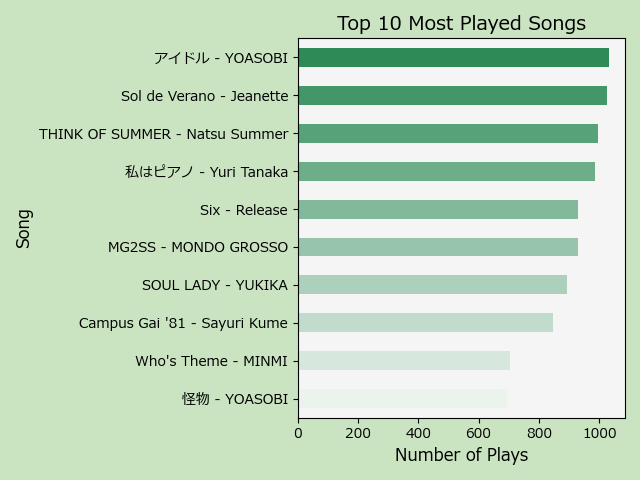
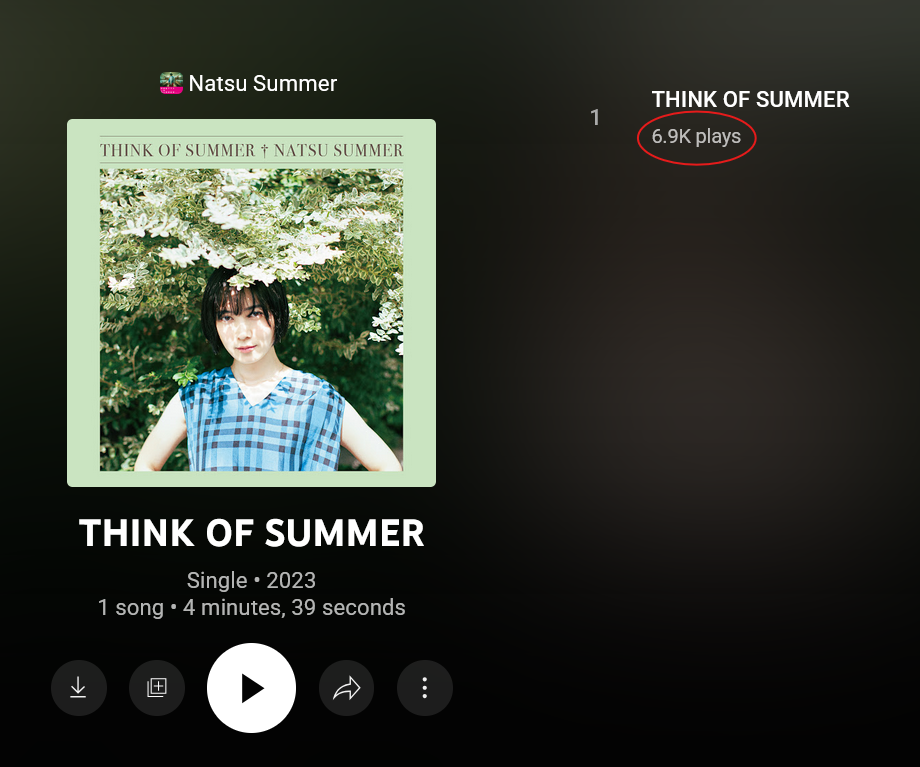
At a total of 6.9k plays between all listeners, I alone constitute about 13% of Think of Summer's listenership via YouTube Music, with around 1000 plays. That’s about 78 hours listening to just this song, averaging 25 minutes per day over the past 9 months, at a 4:39 runtime 🙃. It’s not an even distribution; there are many days I don’t listen to it at all and many where it’s all I listen to while working on something (not that I only listen to music while working - I do spend time listening to music while doing nothing else, putting my full focus onto the song).
This is why I never like to be in charge of music playlists during car rides. I would quickly become unwelcome with this kind of behavior in a group setting. Though I’m sure I’m not alone with my listening habits.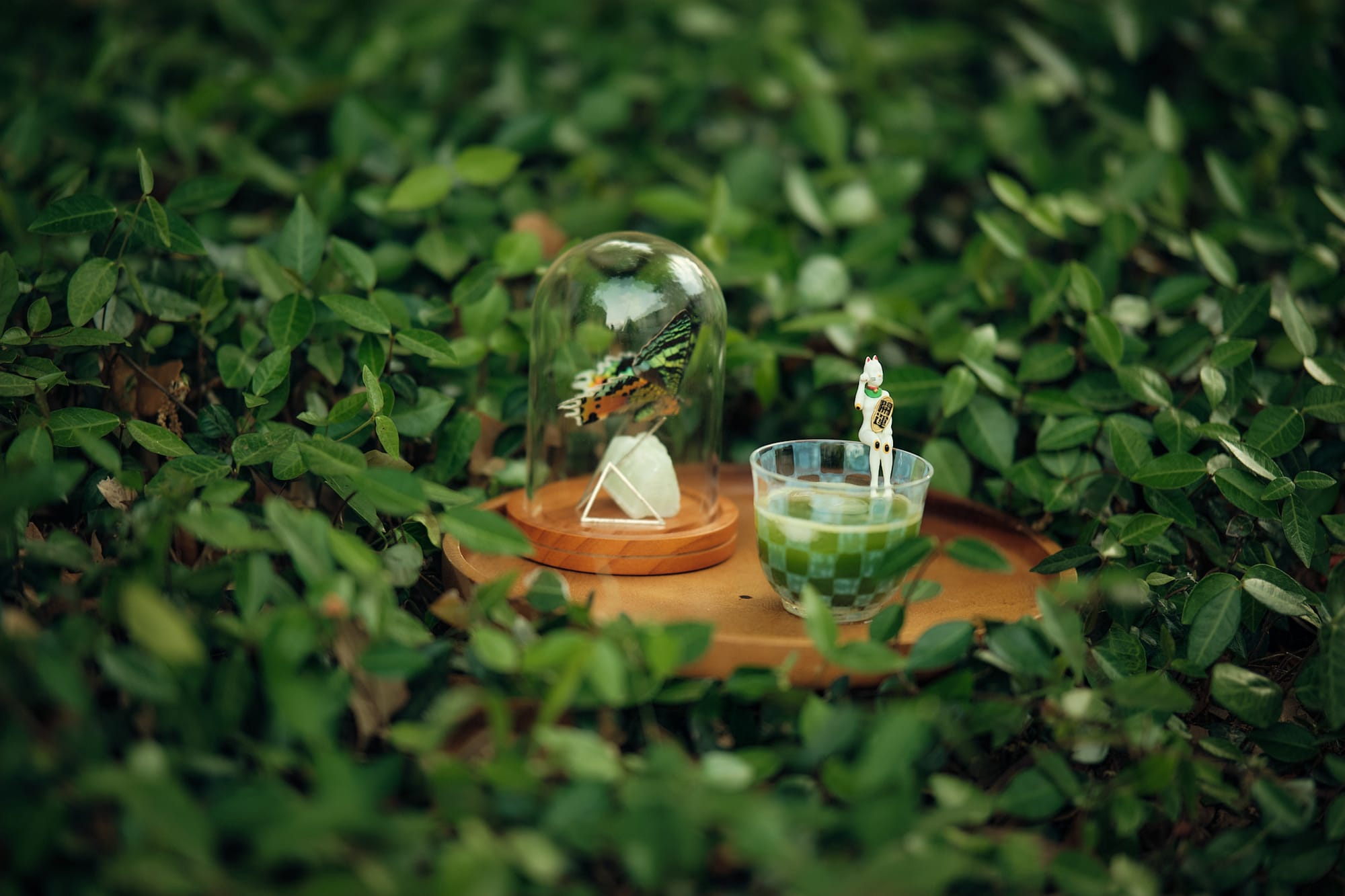
A few times a year, I order large quantities of matcha from Japan (for personal consumption). As Summer 2025 approaches and the weather is warming up (and already, at times, getting disgustingly humid where I live), I’ve started taking out my iced matcha more often.
Think of Summer == Iced Matcha
When listening to Think of Summer, there’s a calming and cooling flavor that’s distinctly reminiscent of rolling hills covered with flowing meadows of Camellia sinensis. However, it’s not simple. The closer one listens, the more the delicate flavors unfold and reveal interesting patterns and ideas. This can be felt more concretely by taking a look at the chord progressions.
Screen cap of my MuseScore transcription of the song
Jazz is one of my favorite genres, but I’ve spent the least time performing or analyzing it. I’m quite rusty with music theory. I haven’t analyzed a piece since my college days, nearly a decade ago. Above is my best guess at what the song is going for in its chord progs for the main phrase.
We’re squarely in A minor for the song (except for the truck driver’s gear change near the end @3:55) with lots of clusters and plenty of gooey chromatic goodness. I skipped ahead to measure 5, starting at around 0:10 in the song. Immediately we're hit with some clustered notes on the tonic chord.
The first thing that sticks out, and what I think is the coolest, is the tritone movements in the bassline that don’t sound jarring or give the typical “spooky” or “sharp” vibes.
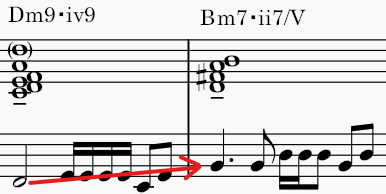
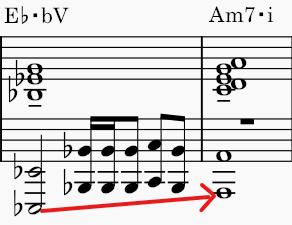
bassline tritone movement
Also, If you listen extremely closely, you can hear an overtone D4 in measure 6 (added in the transcription with a parenthesis) likely due to the resonance between the other notes.
Here’s the typical tritone sound:
Measures 6-7 and 12-13 both have a similar kind of movement in the chords, but the sharpness is softened by the subtle shifts in the midtones that cleverly don’t change too much, along with the walking bassline.
The resolution from 12-13, signaling the next verse by returning home to A minor (i), is a tritone as well, which is insanely neat. Normally, one would expect a V-i, v-i, iv-i, or almost anything but a ♭V-i.
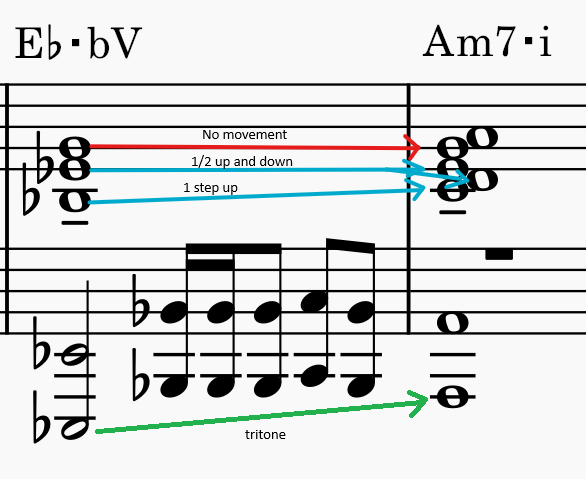
Instead of the usual V-i, V7-i, or even a V9-i to resolve the main phrase’s midpoint, we have an unusual V7b9, represented as an Emaj9♭5 chord - another tritone (this time within the chord itself)!
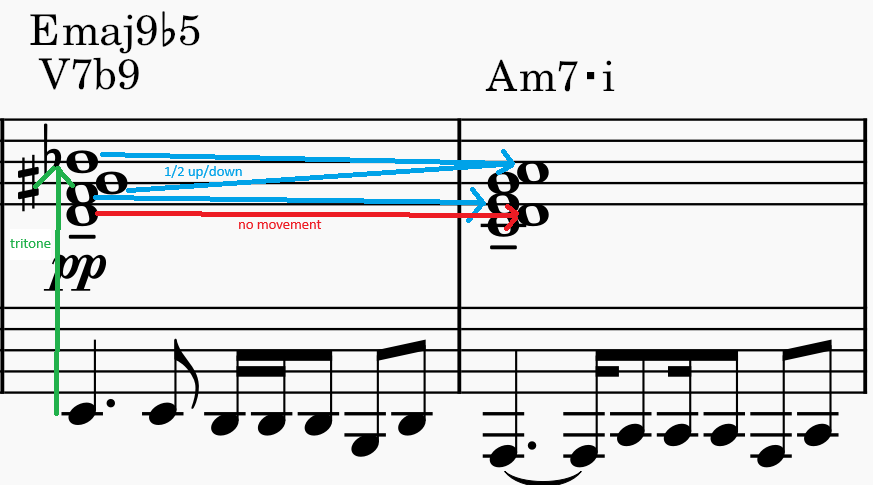
This time, the tritone is hidden with reverb and the giant space between the bass and midtones. The dissonance is pulling us to Am (i), as there’s both a VII (G#) and a ♭ii (B♭) that only need to move a half step to get to where they want to be. The MuseScore recording makes it sound slightly harsher than in the song, which softens it with legato, a warm synth, and reverb. The pincer movement in the chord provides a strong pull and release.
Measures 10-11 have a lot of fun as well. Measure 10 seems to feature (I say seem as it’s quite a speculative guess on my part) a Neapolitan chord acting as a pre-pre-dominant N/ii chord leading us to Gm7, with the bassline starting as a passing D0.
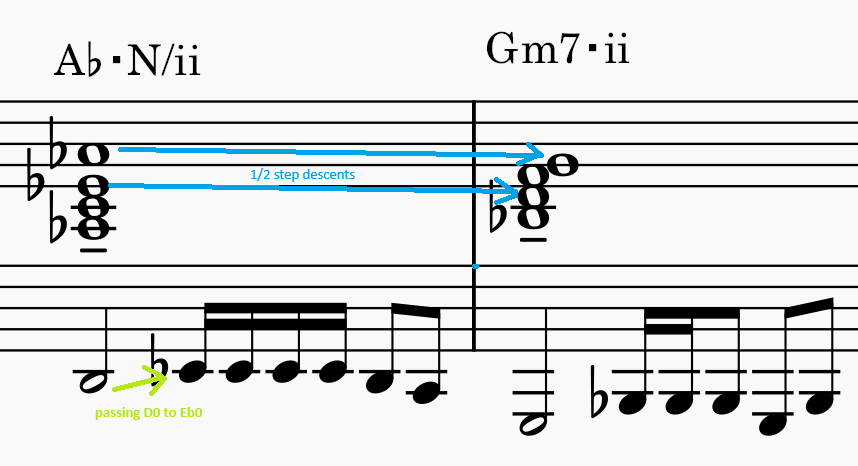
Finally, there's a throughline in the top note starting at measure 7 going measure 11. The B4 takes half steps down all the way to G4.
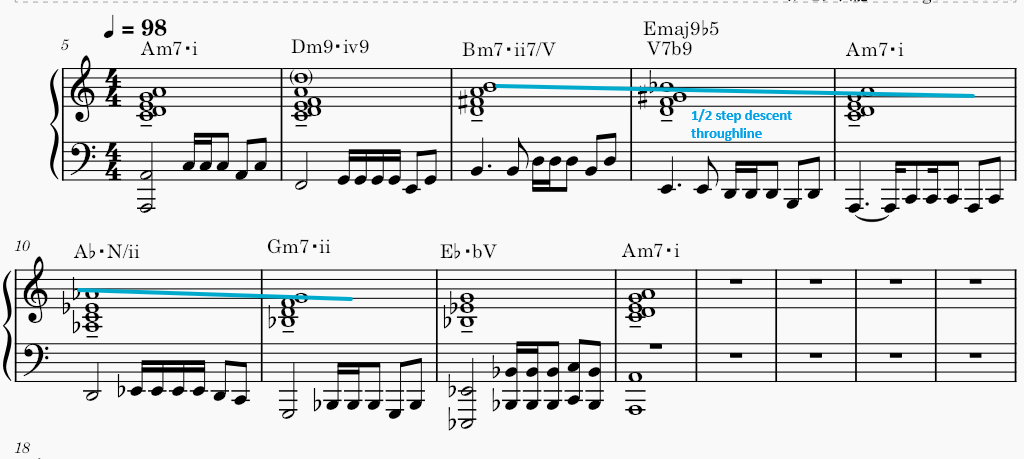
This intro loop is such a strong hook that I must’ve listened to the song 20+ times when I found it. I’d like to analyze the refrain as it’s as interesting as the opener, if not more. However, a full song analysis is out of scope for this post. Maybe in the future. Plus, this post would be delayed into oblivion if I don’t set a sensible cutoff considering how long it took just to transcribe and analyze this passage.
That Think of Summer integrates such odd intervals and chords so naturally shows calming doesn’t need to be synonymous with simple. I’ll provide more analyses of other songs I like in the future (like the other songs in my top-most-listened graph). A common theme among music that I like seems to be chromatic movement, but I think the tritone movement specifically is fairly unique to this song. I don’t have the hard statistics to back this up, but I listen to a lot of music with intention. I almost never hear such big and odd chord jumps. And if I do, they don’t tend to feel as natural and subdued as they do here. I hope to hear and find more like it.
Like the careful temperature control needed in brewing matcha - too hot creates astringency, too cold leaves it flat and immiscible - the song's arrangement walks a perfect line between complexity and accessibility. The producer tempers potentially jarring chord movements with warm synth tones and clever note changes, just as I bring my matcha to the perfect drinking temperature.
Think of Summer is a properly brewed and complex iced matcha blend that can reveal something new each time, if you pay enough attention.
Not convinced of my analysis? I’ve included a clip of the song here with my transcription overlaid for comparison.First, a quick note of advice - if one wants to get Japanese song lyrics, search the song name + 歌詞 (Japanese for lyrics). For example, searching “think of summer 歌詞” on kagi.com yields this for this song’s lyrics.
Another point - Japanese lyric websites tend to restrict highlighting text (and even right clicking sometimes) and copying (like the above example). Sometimes one must use the website inspector to gather what they need.
Anyway, this song presents feelings of unrequited love that aren’t too sad or schmaltzy. It starts with the main character caught in a sun-shower (天気雨) without an umbrella, wishing for warmth from the object of her desire. However, the lyrics are just indirect enough that it’s difficult to tell what’s truly going on.
For example, after talking a little bit about her love interest, the refrain always ends with:
"あなたには分からないけど"
Which in itself is difficult to fully translate with or without context.
The dead simple direct translation would be
“You don’t understand, but”
which isn’t totally satisfying. I’ll include more lyrics soon for context, but this line alone provides some latitude for interpretation. “けど" in Japanese directly translates as “but”, but it can also mean nothing. If it doesn’t mean anything specifically it’s thought of as a softener for the previous words, as in, “you don’t understand… (not that I’m directly trying to confront and tell you so)”.
Here’s more from the refrain:
“駆け抜ける季節には
遅すぎる夏の終わり
アスファルト黒く染めてく
揺れ動く感情は
たったひとつ信じている
あなたには分からないけど”
Translated:
”In the rushing seasons
It's too late, the end of summer
The asphalt is turning black
My wavering emotions
I believe in just one thing
You don’t understand, and yet”
After learning more Japanese over the past year, I’ve gained at least a little more intuition into some phrases and grammar. Given the strong feeling of longing and yearning in this song, I’d say “けど” in this case translates to “and yet”. As in, “you don’t understand, and yet (I still yearn for your warmth)”. I like the fragmented and dream-like lyrics that are open to interpretation.
This indirectness and indecision can, of course, be attributed to the poetic nature of song lyrics, but I feel it’s also related to the high-context communication style in Japan.
It’s a cute, dreamy little story worth translating the lyrics for. Plus, It’s a great song to test Japanese comprehension at the N4-N3 level.
If the lyrics are a dream, then the singer, Natsu Summer, is the one who sang the lullaby. Her soft, warm, and at times airy, voice completes the atmosphere of the song. She provides a narrow, but consistent, range of dynamics and emotion. Her lyrical inflections are interesting as well - she tends to pronounce わ(“wa”) as ヴぁ(“va”, like in 終わり→owari→ovari) and ら as “la”, which is something I’ve noticed Japanese singers tend to do in songs. If the rest of this post didn’t already do so, I think that last sentence reveals how much of a weeb I am.
The bassline and synths are quite tight in their rhythms and tempo. The constant rhythm hit on the upbeat helps keep the song moving along, without which it might get a little bogged down. There’s also just the right amount of Saxophone usage throughout the song.
Singer Natsu Summer (ナツ・サマー) and producer Cunimondo Takiguchi (くにモンド瀧口), create music together somewhat regularly. Natsu Summer has a small, but seemingly loyal, following. Judging by her vinyls selling out, she has a decent amount of reach. She’s done a few interviews discussing her interest and involvement with City Music. According to the interviews, it seems that she can be seen DJing at various Tokyo Jazz bars.
Producer Cunimondo Takiguchi is a key figure in the City Music scene. I didn’t know until writing this post that he produced a fair bit of my favorite music (such as the song Six from my top 10 songs graph from earlier). His quote, “When I started working as Ryusenkei, I wanted to create an adult sound that was urban and refined…” encapsulates the feel of Think of Summer (and all his other music). Cunimondo, and others like Mondo Grosso (listen to Labyrinth), have taken up the modern City Music mantle.
Does analyzing a song to this extent remove some of its magic? Is this tantamount to getting a magician to explain his tricks? I don't think so. This has given me a deeper appreciation for the work put into it and a stronger intuition into my own musical tastes. The confluence of all these features make this song a strong hit for me. I imagine that Cunimondo at this point has the skills such that this kind of writing is natural to him. Every new song of his is another layer of experience built up on his past. Understanding how he puts new work together is like understanding how a watch maker can work with the tiniest tourbillon pieces to make a precision timepiece.
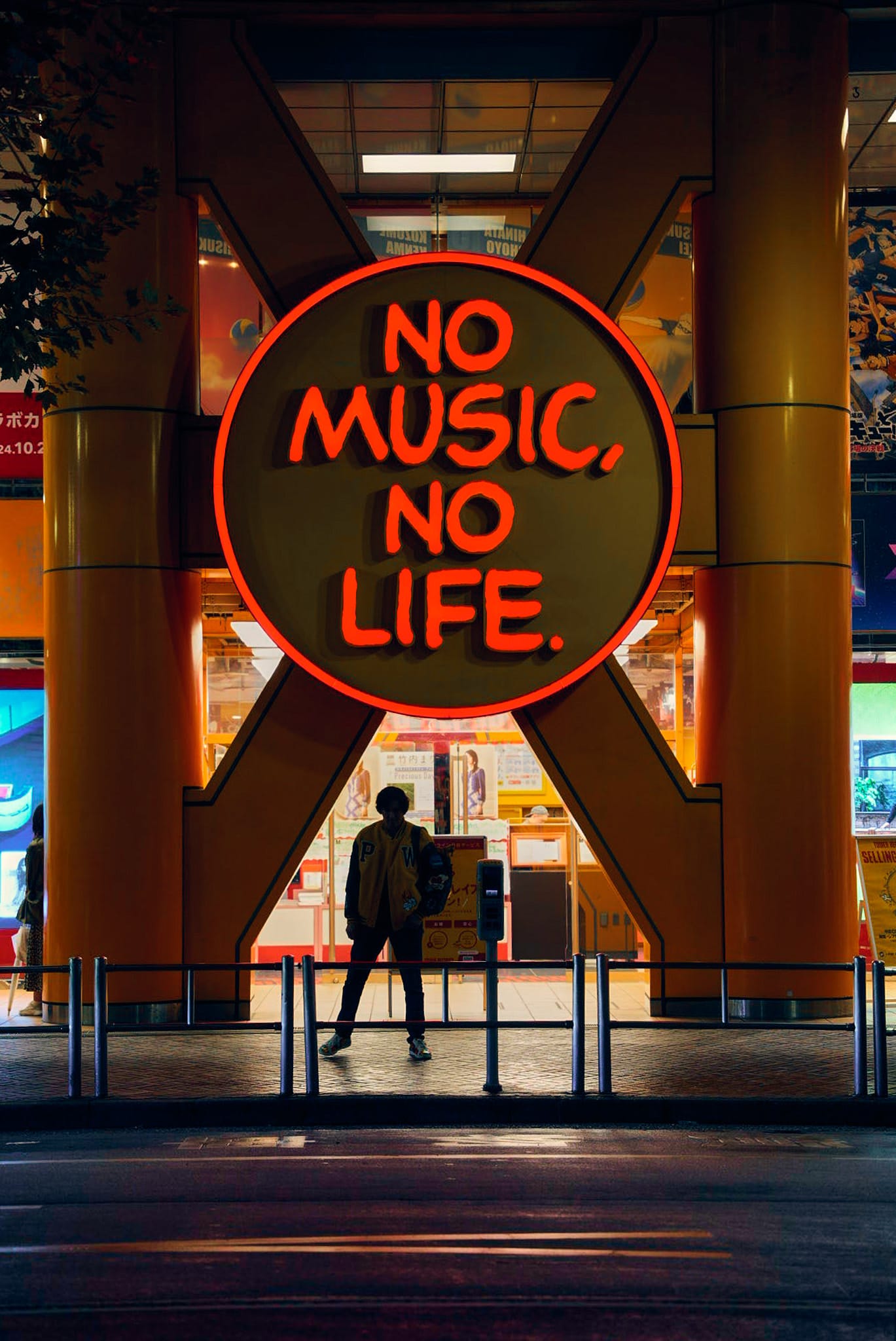
Every time I visit Tower Records in Shibuya, there’s an endless amount of new music from indie groups. This is purely observational, but it feels as though the Japanese music scene invests more into small and unknown groups, creating a broad base of varied tastes. The City Music style is just one of many growing in that garden.
As ossified as Japan might be in some areas, in music, it seems to promote a vibrant culture of experimentation. Perhaps I’ll focus on testing and researching this hypothesis in a future post. The American music scene, on the other hand, currently seems fixated on the past and only supporting the biggest players.
I hope that anyone who finds this post feels at least a little more empowered to make music like this. The technical complexity can seem daunting, but it’s worth trying. If you’re not a musician, I hope this post persuades you to listen and support this music.
It’s no secret to those around me that I do not like modern American pop music. I should spend more time looking for music like this in America, but it just seems easier to find it in Japan. I welcome any suggestions of American music in this style and the importation of it across the spectrum. If this post were to come across any musician’s pretty little eyeballs, perhaps they may feel slightly nudged towards trying something different. Though they likely won’t have backing from the big record labels.
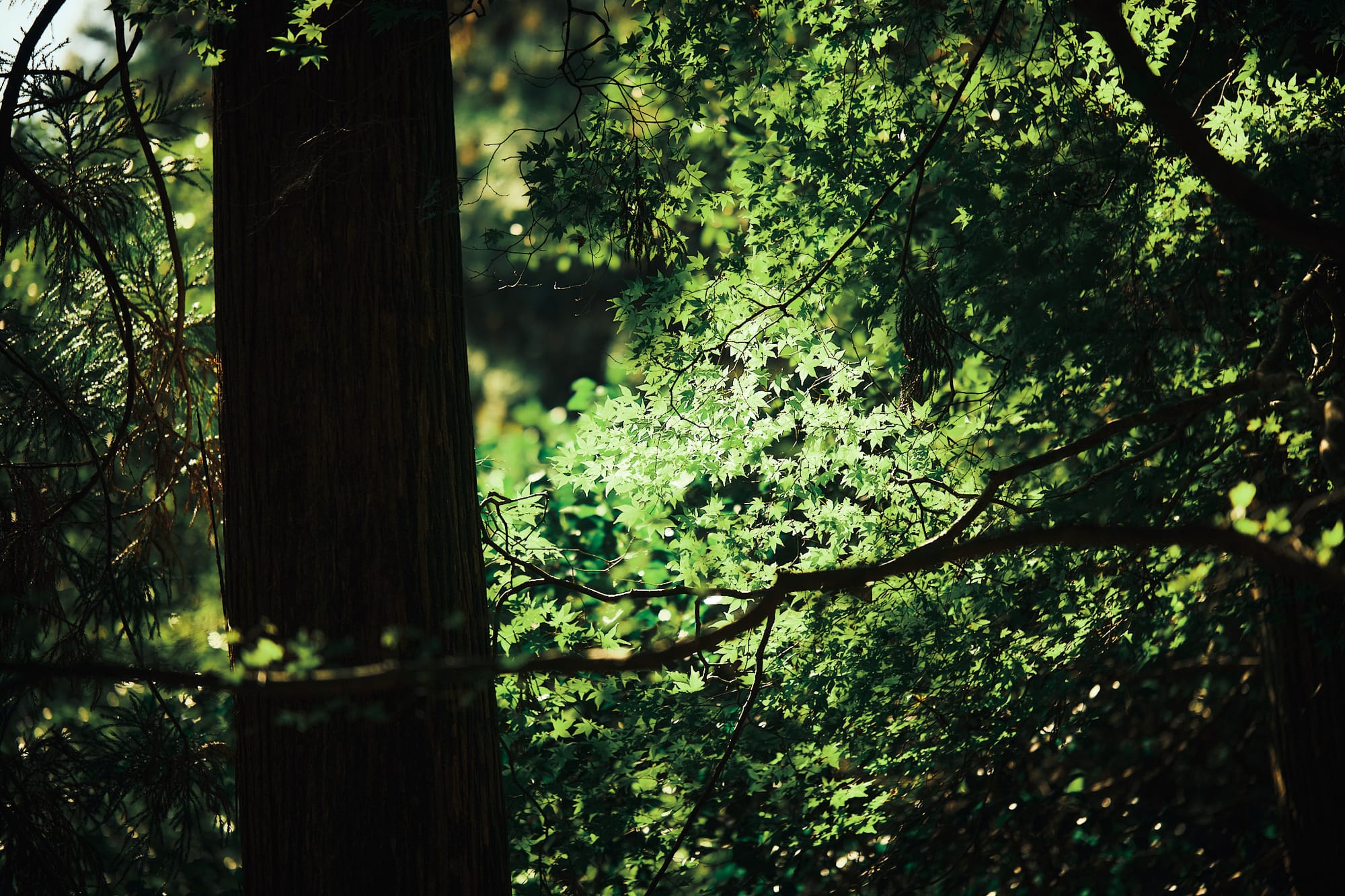
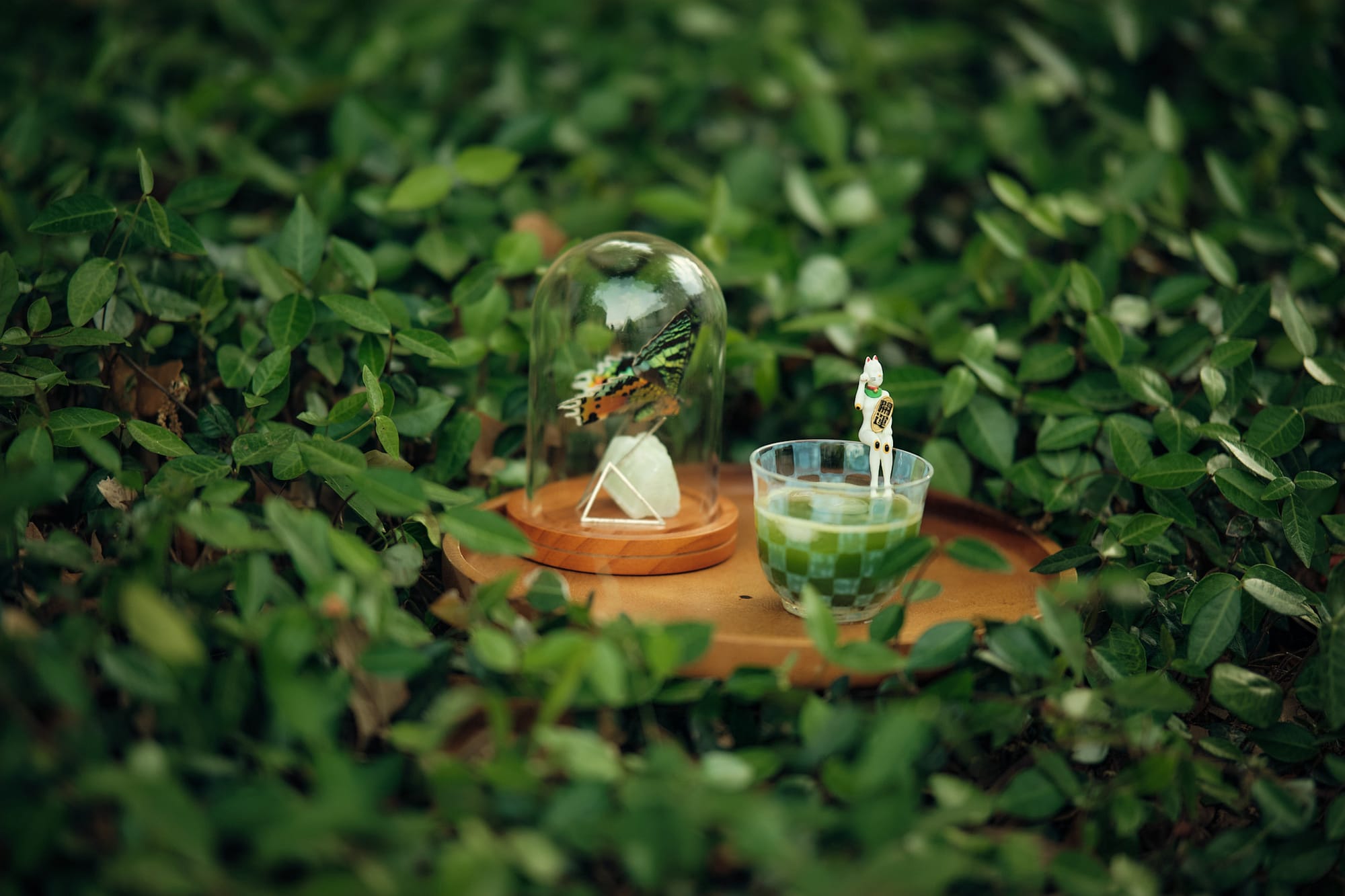
Music, robotics, books, photography, society.
No spam. Unsubscribe anytime.
Your link has expired. Please request a new one.
Your link has expired. Please request a new one.
Your link has expired. Please request a new one.
Great! You've successfully signed up.
Great! You've successfully signed up.
Welcome back! You've successfully signed in.
Success! You now have access to additional content.